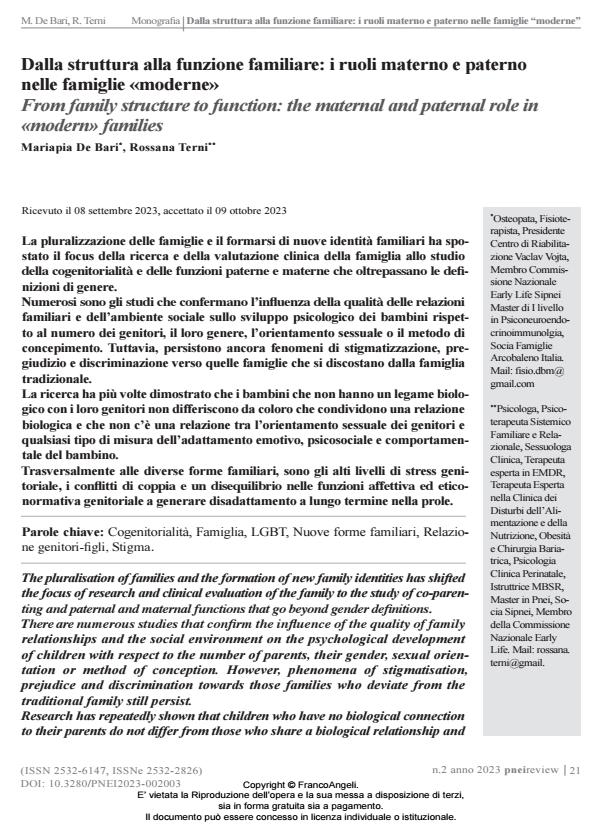From family structure to function: the maternal and paternal role in «modern» families
Journal title PNEI REVIEW
Author/s Mariapia De Bari, Rossana Terni
Publishing Year 2023 Issue 2023/2
Language Italian Pages 14 P. 21-34 File size 1132 KB
DOI 10.3280/PNEI2023-002003
DOI is like a bar code for intellectual property: to have more infomation
click here
Below, you can see the article first page
If you want to buy this article in PDF format, you can do it, following the instructions to buy download credits

FrancoAngeli is member of Publishers International Linking Association, Inc (PILA), a not-for-profit association which run the CrossRef service enabling links to and from online scholarly content.
The pluralisation of families and the formation of new family identities has shifted the focus of research and clinical evaluation of the family to the study of co-paren- ting and paternal and maternal functions that go beyond gender definitions. There are numerous studies that confirm the influence of the quality of family relationships and the social environment on the psychological development of children with respect to the number of parents, their gender, sexual orien- tation or method of conception. However, phenomena of stigmatisation, prejudice and discrimination towards those families who deviate from the traditional family still persist. Research has repeatedly shown that children who have no biological connection to their parents do not differ from those who share a biological relationship and that there is no relationship between parental sexual orientation and any type of measure of sexual orientation, emotional, psychosocial and behavio- ral adaptation of the child. Transversally across the different family forms, it is the high levels of parental stress, couple conflicts and an imbalance in the affective and ethical-normative parental functions that generate long-term maladjustment in the offspring.
Keywords: Coparenting, Family, LGBT, New family forms, Parent-child relationship, Stigma.
- Il padre ritrovato: aspetti antropologici e psiconeuroendocrini della nuova paternità Franco Baldoni, in PNEI REVIEW 1/2024 pp.37
DOI: 10.3280/PNEI2024-001004
Mariapia De Bari, Rossana Terni, Dalla struttura alla funzione familiare: i ruoli materno e paterno nelle famiglie «moderne» in "PNEI REVIEW" 2/2023, pp 21-34, DOI: 10.3280/PNEI2023-002003